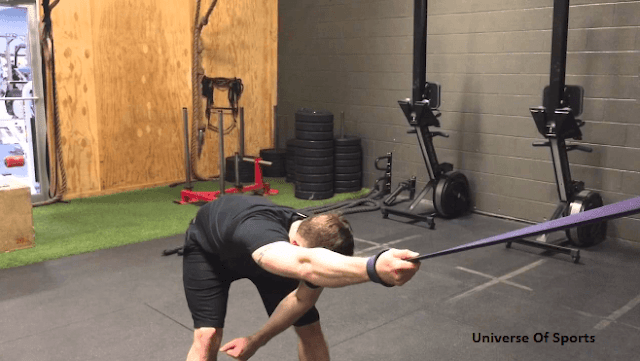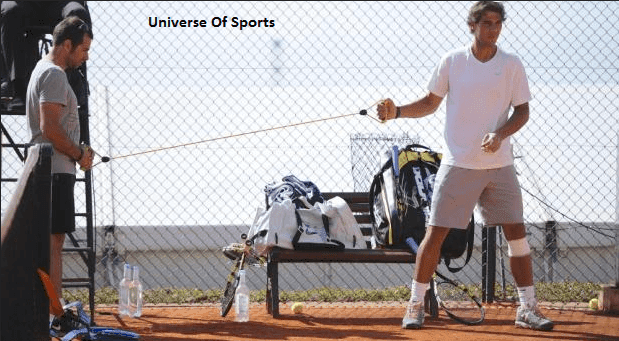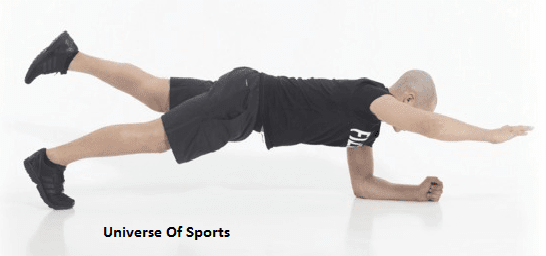Tips to care for and preserve your back to tennis
 |
| Tips to care for and preserve your back to tennis |
Tennis is a fun and attractive sport that attracts more and more fans every year. Unfortunately, many players interfere with their physical preparation and regularly suffer from low back pain, back pain or herniated discs. I would like to educate as many people as possible about actions and recommendations to protecting the back and not hurting themselves. Enough talking, let's get back together in the thick of things.
Warm up before a tennis match
 |
| Warm up before a tennis match |
Do you usually go to a tennis court and start playing directly? By tapping the ball gently, you think you can warm up your body and prepare it for the rest of the match? Well, you are not totally wrong, but this strategy is probably not the best in terms of preparation and prevention of injuries.
Warm up for a few minutes is very important to optimize the performance, but also to reduce the risk of injury. A gradual warm-up will allow to raise the body temperature, lubricate each joint and thus avoid possible back problems. There is no perfect warm-up. Simply, you can start with the self massages supported using a cane or a roll. They will increase blood circulation in the tissues, increase muscle tone and thus prepare the body to the effort. Then heals with a few simple joint mobilizations in order to maintain freedom in your movement and sports actions.
Better recover with the self massages
There are different methods of recovery post-training but it is really effective and will allow to eliminate the problems that many players often face (tendonitis, back pain...). In a simplified way they will:
- reduce muscle tension
- improve blood circulation
- prevent injury
- reduce joint pain (back, shoulders, elbows...)
Massage after every workout. It takes a few minutes. It's pretty simple to run. Using a foam roller, massage your body by exploring the most tense areas. In the case of lumbar pain, spend more time on the region of the hips, the back muscles and thighs. In case of chronic pain, I advise you to practice daily, or even several times a day.
To stretch after sport
Why stretching?
Stretching will allow the muscles to regain their original length. For better efficiency, it is recommended to massage the tissues slowly before stretch them, it is best to use circuits of passive stretching. The goal is to maintain a static position for 30 seconds, breathing calmly with the belly.
Tennis, like all racquet sports, requires muscle chains and joints one-sided and frequent. Over time, imbalances can develop and some muscle chains will regress. In the end, if nothing is done to counter it, you will end up accumulating a lot of tension and loss of mobility, which can cause problems (tendonitis, joint pain, lower back pain, etc.)
Stretch in a balanced way
To keep a functioning joint but also to prevent injury, it is important to stretch in a harmonious way. That is to say that for every stretched muscle channel, it will also stretch the opposite channel to avoid muscle imbalances around each joint.
For any passive stretching, aims to take a position and hold it for 30 seconds, breathing deeply with the belly. The tissues will be still more easily stretch if you massage them beforehand. And for even more efficiency, some stretching can also be done by using elastic bands as pictured (stretching of the latissimus dorsi).
 |
| Stretch in a balanced way |
Prevent back pain with the plank
Progress without getting hurt
Tennis is a sport that requires good physical condition. Indeed, it will force the body and more particularly the spine to make explosive movements in rotation, flexion and extension. Players who are moving forward in time are those that last and do not hurt. To do this, therefore, learn to build smart muscles.
To prepare the body to this practice, it is important to work in its entirety. And in a logic of sports preparation, we work mostly by performing functional movements, which are close to the maximum of our sports actions (forehand, backhand, service etc...). It is much more effective than to seek to isolate certain muscles to move them forward. Thus, the qualities you'll develop will be immediately usable and transferable in your practice of tennis.
Tennis and herniated disc
Most sports injuries to the back, as the herniated disc, are usually in rotating movements. Indeed, the column and intervertebral discs are much more fragile in this kind of movements. However, the rotating movements are involved in the majority of sports activities (tennis, football, rugby...). Therefore, preparing the body to take that kind of action.
Exercise in the photo is great for you to work as anti-rotation. Let us not forget that the lumbar floor is often "overcrowded" and that there was need for stability, while chest upstairs, he needs more mobility. Working your cladding, you will get a spinal stability, and your movements will be much more effective in your games.
 |
| Tennis and herniated disc |
On this exercise we will work both obliques, the entire abdominal muscles, Para vertebral muscles, shoulders and chain of arms. In short, there is no more complete. Finally you must keep in mind that on each of your straight knocks or backhands, the body rotation must always start from the hips. It is they who initiate the movement, not the lower back.
Dynamic plank
 |
| Dynamic plank |
After having integrated static plank exercises, go very quickly to progressions in dynamic plank. The movements used are much closer to sporting gestures or actions of everyday life. So, we're going to all the muscles around the back, pelvis, and hips to contract with the right intensity, good speed in order to not get hurt and be able to take any effort.
To perform the exercise correctly, you must leave the classic position of Board, supported on arms forwards and the balls of the feet. Then, lift way alternating one leg after the other while staying properly enclosed. Most important here is to keep the level basin. This work will have an impact on your overall stability while you work your glutes and your hamstrings.
Reconcile tennis and back pain
Back problems can you handicap in everyday life but also slow down you in your progression to tennis. Fortunately, there are solutions to preserve your back and limit this kind of pain.
Choose the right equipment
Some players neglect the importance of a good sports equipment, while it is important to consider, both in terms of performance to injury prevention.
- A good pair of shoes tennis-specific: it is essential to have a good foot hold during your races and change of direction. Choose a model that brings you both comfort and safety. Hard to recommend a specific model. For this, it is best to get closer to a store specialist who can advise you compared to your own needs.
- A suitable racket: the choice of the grip and the rope is important, even if votregeste and your technique will have more impact on your future back pain. Some players are constantly seeking power and tend to force their shots rather than relying on their ball. In all cases, take classes with a graduate teacher can help you improve your body language.
- A bottle of water: we think not necessarily, but hydration is essential. Our body consists of 70% water. She is actively involved in the recovery of the entire organism. Then in a match or training, feel free to drink regularly between games.
Choose a suitable surface
Some areas of play can be more traumatic than others for your spine. If you are rather sensitive back and that you play regularly on hard floors, this can be too aggressive and generate constraints for your column and your disks. Try to vary and prefer more softs land surfaces. Movements will be less brutal and therefore less traumatic for your back. More clubs are now equipped.
Listen to your body
Whether inside or outside the court, you must remain vigilant and attentive to what your body is telling you. All pain is a signal that something is wrong. Pain is a real system of communication established between the body and the brain for you alarmed and make you respond. If you have trouble, ask you what could have triggered the pain. Of course, in the case of persistent pain, feel free to consult a doctor who will help you find the best solution to treat your back pain.





0 Comments